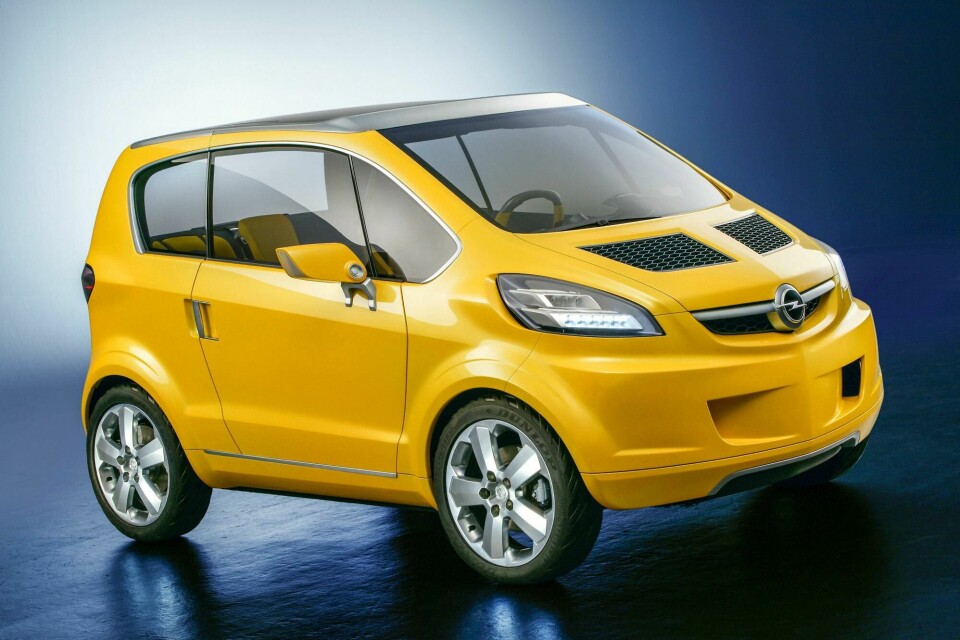
Concept Car of the Week: Opel Trixx (2004)
A look back at GM’s attempt at a smarter Smart city car
In almost any year, visitors to the annual Geneva motor show are treated to the debut of exotic sports cars, executive luxury cars, and concept cars from a host of manufacturers The 2004 edition of the show was no exception, although it’s likely that the high-end super and showcars on display meant that many missed on of that year’s more innovative, and diminutive, concept cars: the Opel Trixx.

Conceived by then-CEO Carl Peter Forster as a challenge to the designers at Opel and GM-owned Saab, the brief for the Trixx was to create the best car with a three-metre length limit. The winning proposal was designed at the Saab studios and built by Coggiola in Italy.

Thought by many to be GM’s challenge to Daimler’s Smart car, the Trixx was conceived to be more versatile and practical than its rival. The first order of business seemed to be in the packaging itself. The Smart was only 2.5-metres long. Opel thought an extra half-metre would add enormous value and versatility without sacrificing city manoeuvrability.

Additionally, the Trixx was tall, at almost 1600mm, allowing a more generous interior package, and a higher driving position. It also allowed Opel to use a 1.3-litre diesel engine with its radiator on the top, and vents on the hood, allowing a compact front-end package with the added benefit of better pedestrian protection.

But it is in the interior that Trixx showed its greatest versatility. The cabin is accessed by three “pantograph” doors, which push out on bars and slide away. The drivers side access was of relatively conventional width, but at the passenger side the two doors swinging out and away created an enormous entry that allowed for easy access to the entire interior. The open configuration of the doors, next to the body of the car itself, aided in loading and unloading in tight urban parking situations.

The Trixx was designed with three seating configurations in mind, hence the “Tri” in its name. Called ‘Flex 3’, it could be arranged as a one-seater with cargo room; a conventional two-seat option; or a three-seat setup, each with a fold-down child seat. The rear seat was made from neoprene and was inflatable, thanks to an on-board air compressor, when required. The passenger seat folds into the floor to create an 890-litre cargo space.

Coupled with the sliding roof and rear windscreen panels(there’s no hatchback), the cargo capacity enlarged to that of a small truck. At the rear, the fascia swung down to reveal a slide-out drawer that unfolded into a cargo rack for luggage or bikes.

With all the fold-away wizardry of the interior elements, it would have been easy to overlook the driver, but Opel included some innovations there too. Chief among these was locating all of the car’s controls and displays on the steering wheel stack, arranging everything within easy reach, and stacking the instrumentation directly in the driver’s line of sight.

All this sleight-of-hand packaging and technical ingenuity was contained in a body that could have easily been chunky and ungainly. But GM designers employed diagonal wedge-like character lines, a large glasshouse, and articulated head- and tail-light assemblies to relieve the eye. Additionally, the mass of the body was counterbalanced by the 17-inch wheels, which were very large for a car of this small size.

Still, as with so many A-segment cars, a toy-like appearance was difficult to avoid. GM sought to counterbalance this with all the functional elements. Stefan Arndt, chief designer of GM’s advanced design studio in Gothenberg, said at the time: “You want to hug the Trixx, it’s cute, at the same time strong and versatile like a Swiss army knife”.

We‘re not sure about hugging, but the styling and Pikachu-yellow colorway certainly added some Pokémon cuteness to the little car, which, depending on your point of view, either softened or detracted from the Swiss army knife functionality.

The Trixx was a fully running prototype, and it was hoped many of its features would be incorporated into a new A-segment car. However, these were expensive to produce in volume, and the pantograph doors would probably not pass muster with safety regulators. Still, the Trixx was a car of ideas, and the urban car is still a very relevant genre over a decade later. The Trixx deserves a place in the discussion as we develop a car for the megacity of tomorrow.



